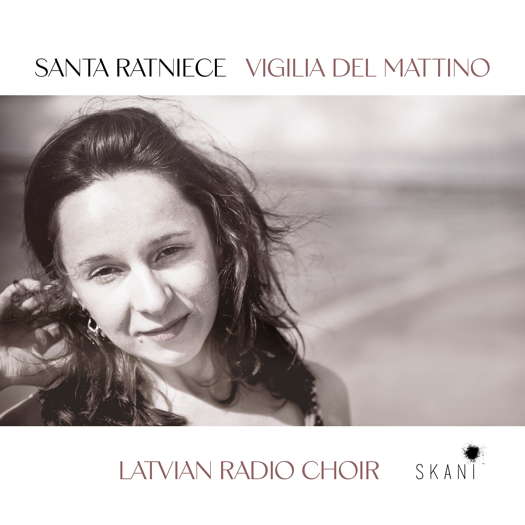- Guernsey
- Robert Matthew-Walker
- Veracini: Overture IV in F
- Matthieu Lécroart
- Fritz Lohner-Beda
- Michelle Gott
- Alexander Moyzes: Dances from Gemer
- Richard Lorber
 VIDEO PODCAST: John Dante Prevedini leads a discussion about The Creative Spark, including contributions from Ryan Ash, Sean Neukom, Adrian Rumson, Stephen Francis Vasta, David Arditti, Halida Dinova and Andrew Arceci.
VIDEO PODCAST: John Dante Prevedini leads a discussion about The Creative Spark, including contributions from Ryan Ash, Sean Neukom, Adrian Rumson, Stephen Francis Vasta, David Arditti, Halida Dinova and Andrew Arceci.
 SPONSORED: CD Spotlight. An Encyclopedic Recital - Elizabeth Moak plays Judith Lang Zaimont, heard by the late Howard Smith.
SPONSORED: CD Spotlight. An Encyclopedic Recital - Elizabeth Moak plays Judith Lang Zaimont, heard by the late Howard Smith.
All sponsored features >>

The Voice of Nature
JOHN DANTE PREVEDINI listens to music by contemporary Latvian composer Santa Ratniece
'... the intelligence of the earth itself ...'
SKANi music's recent release, Vigilia del Mattino, is a showcase of four choral works by the contemporary Latvian composer Santa Ratniece (born 1977), performed by the Latvian Radio Choir under the batons of Sigvards Kļava and Kaspars Putniņš. As Kļava describes Ratniece's broad compositional voice in the liner notes for this disk, she 'composes the sound of the World', a deceptively simple observation which on further inspection proves prescient in more ways than one. The texts among the four works are remarkably diverse, ranging in language from Italian to Arabic and Japanese and ranging in source from Dante and St Francis to classical Japanese poetry and the Song of Solomon. This alone would be enough to support Kļava's insight, at least in a multicultural sense. Yet upon listening to the recordings on this disk, Ratniece's work also reveals itself as the embodiment of an entirely different interpretation of this description not fully articulated in the liner notes: the intelligence of the earth itself, sung into articulation by the voice of nature.
What, then, does the voice of nature sound like as music? Ratniece's solution seems to be to focus on the sonically relatable evocation of shapes, motions and processes of the natural world which are thus non-cultural or perhaps even 'pre-cultural'. In this sound world, gone are the obvious cultural cues of audible meter, form, harmonic progression, functional rhythm and repertorial allusion for which we might otherwise listen. Instead, organizational masses of sound gradually rise and fall in size, intensity and complexity while other isolated sounds move peripherally over, under, around or through these organizational masses. Within the sound masses themselves, individual particles (ie singers or instrumental players) can move about in two primary ways: they can exhibit the seeming kinetic randomness of a cloud of water droplets or a swarm of bees, or they can exhibit the seeming synchronization of a flock of birds or a school of fish.
Laws of classical physics and acoustics, namely the overtone series, seem to be used as metaphorical reference points as well. While the overtone series is never explicitly evoked per se, the general principle is followed of using larger and more consonant intervals in lower registers. In terms of classical physics, Ratniece seems to imbue her sound palette with an intuitive sense of inertia, whereby 'heavier' voices move more slowly and 'stay on the ground'. Taking these two physical metaphors together, the low voices and instruments generally hold longer notes and remain grounded in diatonic consonances, while higher voices and instruments are left free to move quickly and more dissonantly. It is thus in these upper registers that more gestural, microtonal and imitative (eg birdlike) figures are placed, where they can coexist over the natural 'support' of the lower voices in a universe of organized chaos like nature itself.
This pre-cultural interpretation admittedly may seem ironic in light of the deep cultural significance of the texts chosen for Ratniece's choral music, but I posit that Ratniece may be using this juxtaposition to invite the reexamination of our many cultural concerns in a broader light, to remember the subliminal but fundamental role nature plays behind all human cultural pursuits, legacies, conflicts and crises.
The disk opens with the titular piece as conducted by Kļava, the single-movement Vigilia del Mattino (2015) for chorus with harp based on excerpts from Dante's Paradiso emphasizing the image of light. Here, the harp almost seems to float through a sea of voices, as the individual singers exchange motivic imitation that is more evocative of natural 'echoing' than of composed counterpoint.
Listen — Santa Ratniece: Vigilia del Mattino
(track 1, 4:00-4:45) © 2020 LMIC/SKANi & Latvijas Koncerti :
The next seven tracks are a series of brief excerpts from the opera War sum Up: Music. Manga. Machines (2011), an abstract theatrical meditation on war based on Japanese classical poetry with elements of Noh drama and manga comics (conducted by Putniņš). The liner notes explain that the whole opera is really a collaboration among several composers and that the representative tracks on this disk feature just the contributions by Ratniece with electronics supplied by the French composer Gilbert Nouno. It is unclear from the liner notes how Ratniece and Nouno chose to approach their collaboration, but the result shows a compelling range of harmonic, motivic and coloristic combinations between the choir and the electronics. Nouno's understated and organic electronic aesthetic reveals itself to be an ideal complement to Ratniece's choral style, and both artistic voices give each other considerable room to breathe in their creation of the synergistic phenomenal space.
Listen — Santa Ratniece and Gilbert Nouno: War Sum Up: Music. Manga. Machines
(track 7, 1:00-1:32) © 2020 LMIC/SKANi & Latvijas Koncerti :
The penultimate track is the only composition on this album to have been previously released on record, the single-movement fuoco celeste (2011) for choir with cello, here conducted by Kļava. The texts used in this work are a combination of those of St Francis and the anonymous Fioretti di San Francesco. The work showcases Ratniece's vast timbral range as a choral writer as well as her vivid approach to text painting, namely the flawless imitation of bird calls in the highest registers of the cello.
Listen — Santa Ratniece: fuoco celeste
(track 9, 4:00-4:50) © 2020 LMIC/SKANi & Latvijas Koncerti :
The disk concludes with the single-movement nada el layli (2015), a setting of excerpts from the Song of Solomon in Arabic for choir with kemenche and qanun (respectively, a type of fiddle and zither). The Latvian Radio Choir is here joined by Ensemble Sarband under the baton of Putniņš. Ratniece describes the ensemble as 'musicians of the Arab maqam tradition', though it is unclear to what extent the piece requires these musicians to incorporate the improvisatory nature of maqam practice. Irrespective of whether the instrumental parts are pre-composed or left to improvisation, however, it is apparent on listening that the instrumentalists use an Arabic scale with no equivalent in Western tuning. Despite the challenge, Ratniece is able to seamlessly blend the Arabic instrumental tuning with the Western diatonicism of her choral writing and still achieve a consistently harmonious effect overall.
Listen — Santa Ratniece: nada el layli
(track 10, 4:00-4:45) © 2020 LMIC/SKANi & Latvijas Koncerti :
In this maddening moment when our world is all at once plagued by deadly social inequities, political conflicts and public health crises, we must not forget that the health of nature is still in the balance as well. In her own unique way, Santa Ratniece encourages us to consider the trials and tribulations of humanity through the eyes of nature. When Dante and St Francis rejoice, it is the birds and the heavens that sing. When the lovers embrace, it is the morning dew that sings. When the victims of war cry out, it is the snowy forests that sing. When Nature herself is gone, who among us will be left to sing her lament?
Copyright © 18 April 2021
John Dante Prevedini,
Connecticut, USA

CD INFORMATION - SANTA RATNIECE: VIGILIA DEL MATTINO
SKANi / LATVIAN MUSIC INFORMATION CENTRE
RECENT CLASSICAL MUSIC CD REVIEWS


